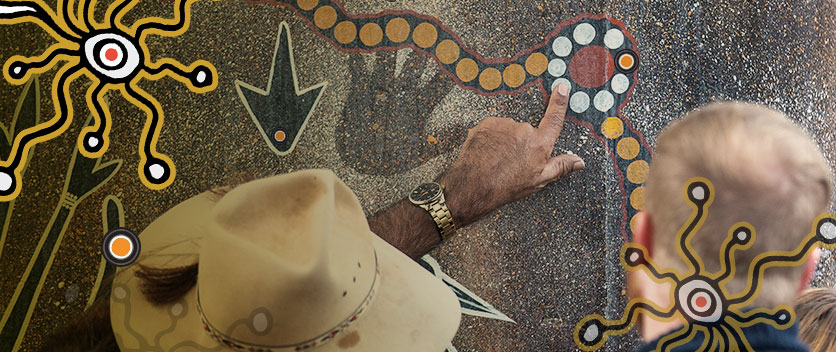What is an Aboriginal land claim?
In 1983, the NSW Government introduced the Aboriginal Land Rights Act. This recognised the effects of past government decisions, and created a system of Aboriginal land rights to compensate Aboriginal communities for the loss of their land by allowing for the return of eligible Crown land to Aboriginal ownership. This system continues to the present day.
Aboriginal land councils can lodge Aboriginal land claims for ownership of some Crown land. Crown Lands facilitates the return of eligible land to Aboriginal land councils by assessing land claims and, if a claim is successful, transferring land.
Aboriginal land councils can make Aboriginal land claims for the return of parcels of Crown land to their ownership under the Aboriginal Land Rights Act 1983.
Crown Lands acknowledges Aboriginal people as the traditional owners and custodians of the lands now known as NSW. Following European settlement, colonial and then successive state governments asserted ownership over the land. They proceeded to survey and allocate land, and to record and guarantee tenures. This created freehold property rights for settlers.
The remainder of the land became Crown land, held in public trust. At the same time, infrastructure was progressively installed on Crown land. This included community halls, Crown roads, showgrounds, sports fields, and parks, which remain integral to community life in NSW.
In 1983, the NSW Government introduced the Aboriginal Land Rights Act. This recognised the effects of past government decisions, as the amount of land set aside for Aboriginal people had been progressively reduced without compensation. The Parliament of NSW created a system of Aboriginal land rights to compensate Aboriginal communities for the loss of their land by allowing for the return of some Crown land to Aboriginal ownership. This system continues to the present day.
The role of the Aboriginal Land Claim Assessment Team (ALCAT), in the Crown Lands branch of the department is to facilitate the return of land to Aboriginal owners and to partner with Aboriginal landowners in realising benefits from this land through the assessment process.
Returning lands to Aboriginal land councils happens in response to Aboriginal land claims. If a land claim is successful, the land is transferred to the Aboriginal land council in freehold.
Read the Definition of terms relating to Aboriginal land claims (PDF, 85 KB).
The claim process
The Aboriginal Land Rights Act 1983 provides that the New South Wales Aboriginal Land Council and local Aboriginal land councils have a legal right to make claim(s) to Crown land.
Aboriginal land councils lodge claims with the Registrar of the Aboriginal Land Rights Act 1983, who is responsible for maintaining a register of Aboriginal land claims. In turn, these claims are forwarded to the department for assessment and determination.
When an Aboriginal land council lodges a claim, this creates an inchoate (unformed) interest in the land. Until the minister administering the Crown Lands Management Act 2016 determines the claim and this interest has been defined, the Crown Lands branch of the department is restricted in its ability to deal with the land or consent to an activity that alters the physical condition of the land. Where land is subject to an undetermined Aboriginal land claim, it cannot be sold until the claim is determined and cannot be leased or licensed, in most cases, without the consent of the claimant Aboriginal land council.
Claim assessment and determination
Aboriginal land claims are assessed against the criteria contained in section 36(1) of the Aboriginal Land Rights Act 1983 which states that:
‘claimable Crown lands means lands vested in Her Majesty that, when a claim is made for the lands under this Division:
- are able to be lawfully sold or leased, or are reserved or dedicated for any purpose under the Crown Lands Consolidation Act 1913 or the Western Lands Act 1901
- are not lawfully used or occupied
- do not comprise lands which, in the opinion of a Crown Lands Minister, are needed or are likely to be needed as residential lands
- are not needed, nor likely to be needed, for an essential public purpose
- do not comprise lands that are subject to an application for determination of native title (other than a non-claimant application that is an unopposed application) that has been registered in accordance with the Commonwealth Native Title Act, and
- do not comprise lands that are the subject of an approved determination of native title (within the meaning of the Commonwealth Native Title Act) (other than an approved determination that no native title exists in the lands).
During the assessment of an Aboriginal land claim, the department identifies and gathers relevant information about the land. The date an Aboriginal land claim is lodged is critical, and any assessment will generally only be able to consider information and activities relevant to that date.
The department will seek information from relevant agencies (including local government and infrastructure providers), land managers and tenure (lease or licence) holders to support the assessment of the claim against the criteria.
This is a legal, non-discretionary process, which is completed in accordance with the criteria. If the land is found to be claimable against the criteria, the Minister for Crown Lands must grant the claim. No other agencies or stakeholders have the power to grant or refuse a land claim.
Once the Minister for Crown Lands has determined the outcome of the claim, the department will inform relevant stakeholders in writing. Records are then updated accordingly.
The lodgement of an Aboriginal land claim by an Aboriginal land council creates what is known as an inchoate (unformed) interest in the land. The full extent of this interest is not known until the claim is assessed and a determination is made by the relevant Minister.
The NSW Government (through the department) will generally not authorise any dealing in land subject to a claim that will: prevent the land being transferred to a claimant Aboriginal land council in the event it is found to be claimable; or impact on the physical condition of the land.
To ensure these conditions are met, the proponent must usually seek consent from the claimant Aboriginal land council for the proposed works or activity before any landowner’s consent can be provided. During the assessment of an Aboriginal land claim, the department identifies and gathers relevant information about the land at the date of lodgement.
We will generally seek information from relevant agencies (including local government and infrastructure providers) and tenure (lease or licence) holders to understand if the land subject to claim is lawfully used or occupied or is needed or likely to be needed for an essential public purpose.
For more information read the Information for Crown land tenants about Aboriginal land claims – Fact sheet (PDF, 390 KB).
When claims are granted, the department arranges the transfer of land in freehold title to the relevant Aboriginal land council. This includes preparing transfer documents, lodging them with NSW Land Registry Services and posting the certificate of title.
Once land is transferred as freehold it is up to land councils what they do with it, however the land is still subject to local and state planning requirements and other regulations.
The ownership of land can support economic, social, cultural or environmental outcomes for Aboriginal communities.
In certain circumstances, land may require a survey before the transfer can be completed. In these circumstances, the department will facilitate this process.
The Aboriginal Land Rights Act 1983 allows appeal rights to claimant Aboriginal land councils where Aboriginal land claims are refused. The NSW Land and Environment Court rules allow the Aboriginal land council to lodge an appeal within a four-month period from the date of the decision.
Recent land claims granted
In the 2023/24 financial year, 754 land claims were lodged and 474 claims resolved. Of these, 296 were granted or part granted. Around 1990 ha of land was granted to 55 different LALCs.
Since the commencement of the Aboriginal Land Rights Act 1983, a total of 4,826 land claims have been granted or part granted by Crown Lands, and 175,774 ha of land has been returned to Aboriginal land councils (as of 30 June 2024). In the 40 years since the Act came in, 7% of all granted land has been granted in the last 3 years.
Land claims in action
The ownership of land can support economic, social, cultural and environmental outcomes for Aboriginal communities.
Below are several examples of how land has been used following successful land claims.
A successful land claim by Biraban Local Aboriginal Land Council in September 2022 saw a block of land big enough for 3 houses in Awaba, Lake Macquarie, returned to the local Aboriginal community.
The 2,000 m2 lot on the corner of Gosford and Ourimbah streets is 500 metres from Awaba railway station. This undeveloped block of land adjoins houses in the middle of Awaba and is close to bushland.
Biraban Local Aboriginal Land Council plans to develop the land for either housing or aged care for the Awaba Aboriginal community. There is also the option to build a community centre on the site.
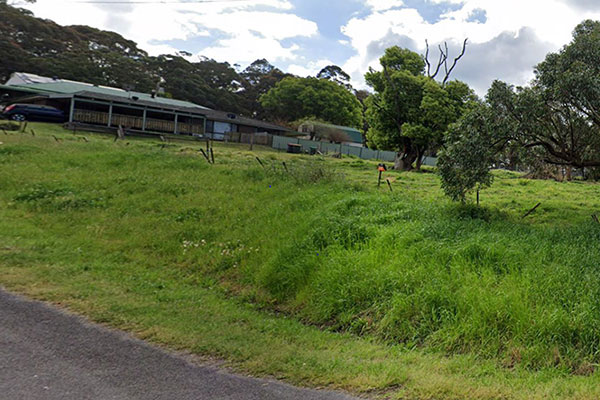
Following a successful land claim in 2007, 10.6 hectares of land was returned to Worimi Local Aboriginal Land Council.
Since then, the LALC have created an award-winning tourism venture: Sand Dune Adventures.
Tourism Australia named it an Indigenous Tourism Champion, with its profits poured back into the local Aboriginal community, funding employment, housing, education, health and elders’ programs.
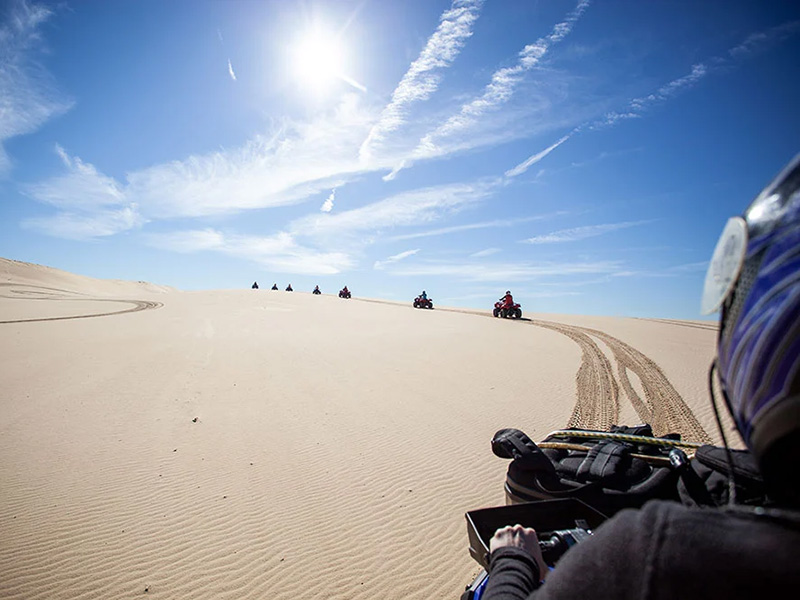
The former Orange police station was transferred to Orange LALC in April 2021.
After extensive renovations, it is now the Orange LALC office, offering many programs and wraparound services, becoming a positive asset for the Orange community.
More than 34 hectares of Crown land at Lake Macquarie was transferred to the local Aboriginal community in June 2022 after the NSW Government granted land claims by Biraban Local Aboriginal Land Council. The approved claims were over 5 separate areas of land:
- 19.09 hectares at the corner of Awaba and Terrigal streets, a large bushland lot near the centre of Morisset featuring Melaleuca Creek and access to Moira Park Road
- 12.75 hectares at Wangi Road, south of the industrial estate along Dorrington Road
- 1.38 hectares at Freemans Drive at the corner of Mandalong Road
- 0.93 hectares comprising 11 adjacent lots between Baddeley Street and Sydney Street, off Wilton Road, near Awaba Station
- 0.54 hectares near Awaba Station in an area between Wilton Road and Olney Street.
Biraban Local Aboriginal Land Council plans to work with Lake Macquarie City Council to determine the needs of the wider community before formulating plans for the land.
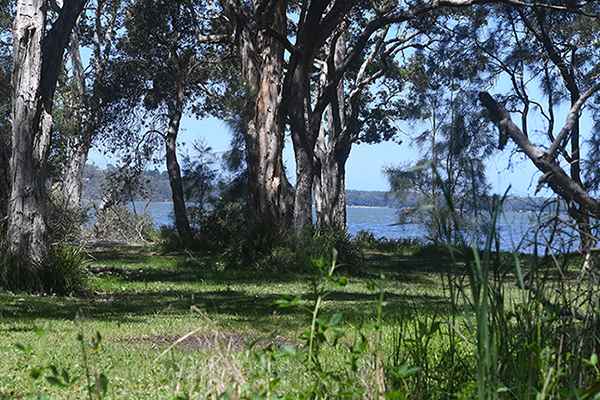
Two former government properties are being used to support community housing following successful Aboriginal land claims at Cobar and Lightning Ridge in November 2021.
The 2 properties were used for government staff accommodation but are now homes for Aboriginal families, helping address the demand for residential accommodation in western NSW.
The properties in Cobar and Lightning Ridge each comprise a 3-bedroom house on approximately 1,000 m2 of land and were transferred to the control of the respective Aboriginal land council for the areas.
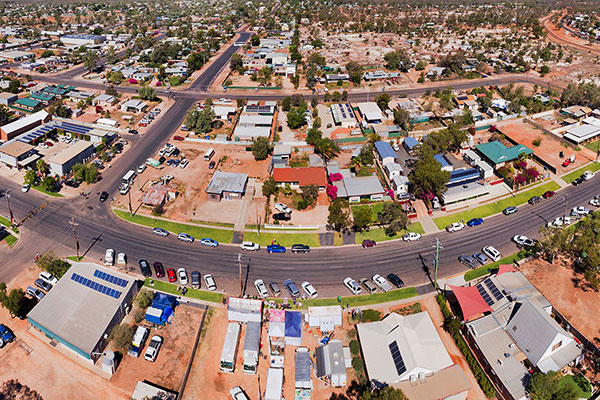
Aboriginal land claims – Consolidated Service Charter
The Aboriginal land claims – Consolidated Service Charter outlines the customer service commitments Local Aboriginal Land Councils (LALCs) can expect throughout Aboriginal land claim (ALC) processes.
